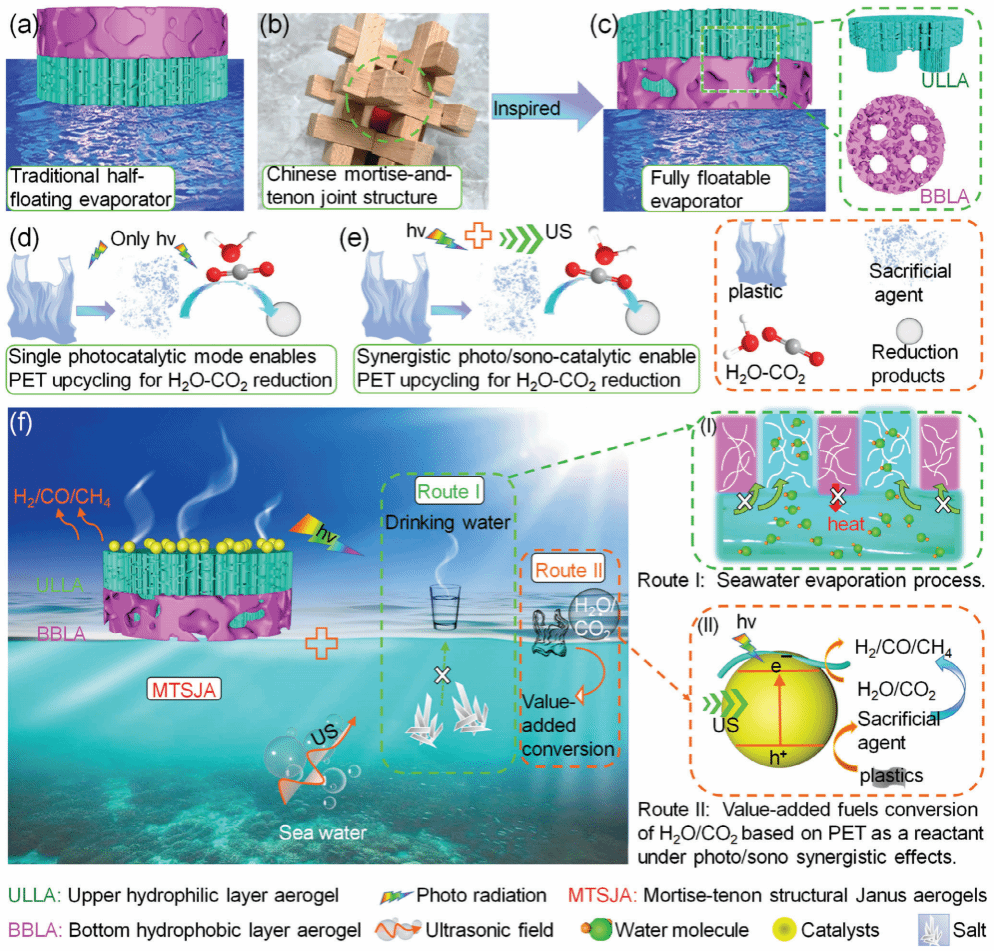The research team led by Prof. Wang Dong from the Ministry of Education Key Laboratory of Textile Fibers and Products at Wuhan Textile University has published a research paper titled Fully Floatable Mortise-and-Tenon Architecture for Synergistically Photo/Sono-Driven Evaporation Desalination and Plastic-Enabled Value-Added Co-Conversion of H2O and CO2 in Advanced Science (paper link: https://doi.org/10.1002/advs.202404423). The first affiliation of the paper is Wuhan Textile University, with Dr. Li Yingying and Master Yao Tongrong from the Ministry of Education Key Laboratory as co-first authors, and Prof. Wang Dong from the Ministry of Education Key Laboratory as the corresponding author.
 Establishing an advanced ecosystem that integrates freshwater collection, plastic utilization, and clean fuel acquisition has profound implications. However, problems such as low evaporation efficiency, single energy utilization, and catalyst leakage seriously hinder the development of integrated systems.
Establishing an advanced ecosystem that integrates freshwater collection, plastic utilization, and clean fuel acquisition has profound implications. However, problems such as low evaporation efficiency, single energy utilization, and catalyst leakage seriously hinder the development of integrated systems.

Inspired by the ancient Chinese structure Luban Lock, this paper designs a Janus aerogel evaporator based on nanofibers with a mortise-and-tenon structure for the first time, loaded with a Z-scheme semiconductor heterojunction catalyst. This mortise-and-tenon structured aerogel achieves a fully floating function on the water surface by embedding the hydrophilic upper layer into the hydrophobic bottom layer, thereby reducing heat loss and realizing high-efficiency solar-steam conversion and water supply. At the same time, benefiting from the ultrasonic cavitation effect, the authors also demonstrate for the first time the synergistic solar and ultrasonic-driven evaporation desalination and the acquisition of fuel energy from the upgrading and conversion of waste plastics. The system achieves a continuous desalination with an evaporation rate of 3.1 kg m−2 h−1 and an efficiency of 82.3% (NaCl solution concentration of 21 wt.%) under one sun, as well as photo-acoustic catalytic conversion of plastics into electron donors to promote the reduction of H2O and CO2, with generation rates of H2, CO, and CH4 being 16.1, 9.5, and 3 μmol h−1 g−1, respectively.
This ecosystem has great potential for seawater desalination and the value-added transformation of plastics into clean energy and carbon neutrality.
